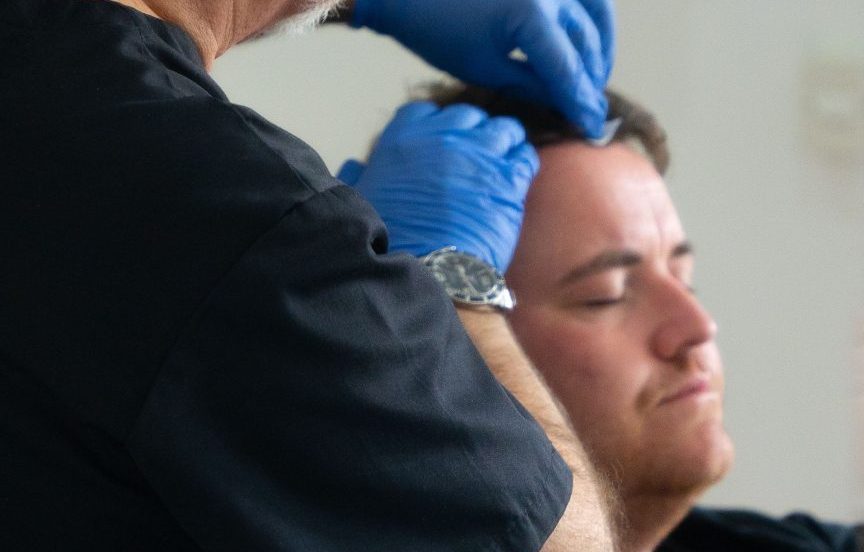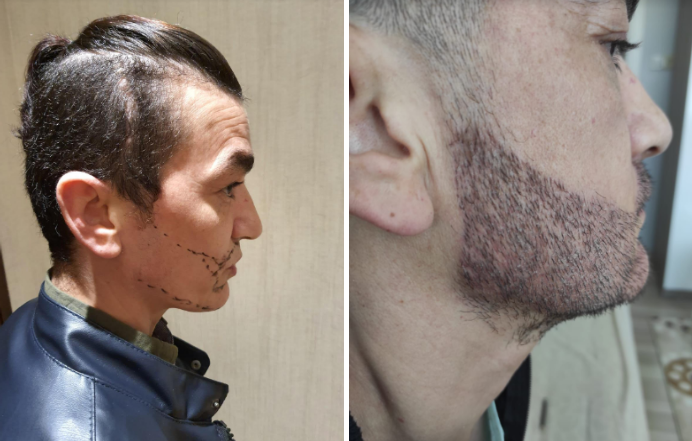
Beard Hair Transplant. All You Need to Know
Beard Hair Transplant. All You Need to Know
Beard
Hair Transplant
Learn all about beard hair transplants, their benefits, and what to expect with Merchant City Medical Group.
Beard Hair Transplant. All You Need to Know
A thick beard is one of the most attractive features of a man. However, what happens when you wish to grow a beard but cannot? Although this can be incredibly upsetting, there is still hope. Bare newborn faces can be transformed into lush gardens of facial hair by getting beard hair transplants, often known as beard transplants. As the popularity of hair restoration continues to grow, beard hair has emerged as an important option, offering unique benefits and versatility. This method has gained traction due to its effectiveness and the increasing number of success stories, making it an attractive choice for many seeking effective hair restoration solutions. Let’s dive into how to get a beard or a fuller one.
What is Beard Transplant?
As the name suggests, a bearded person has hair from another part of their body grafted into their facial hair. Therefore, a beard transplant, sometimes called a facial hair transplant, is a surgical operation that entails taking hair follicles from one area of the body and transplanting them into the sideburns, moustache, and beard to create a fuller, thicker beard. Usually, the hair for the beard implant is provided by the patient's back of the head or, if there is any discernible growth there, the area beneath the chin. Although it is simpler to gather, the hair on the back of the head is more difficult to match and has a somewhat different structure.
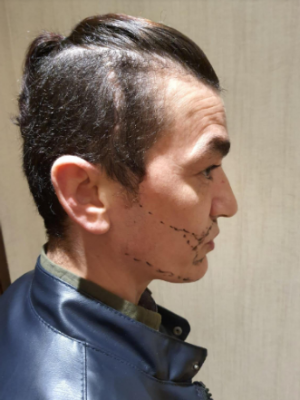
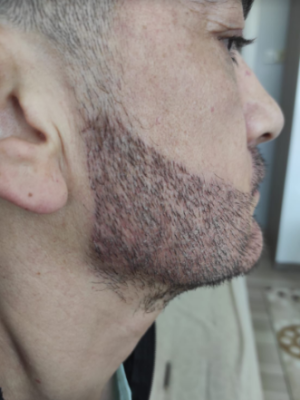

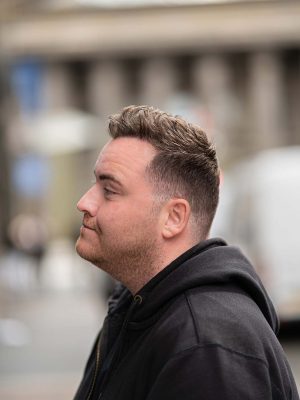
Does the surgeon remove individual hairs and reapply them to the face?
Not exactly! In a "follicular unit micrograft operation," the surgeon removes the entire hair follicle. These micrografts show the complete hair follicle structure, including the sebaceous glands, a small amount of subcutaneous fat at the bottom, and one to five individual hairs. After removing them from other parts of your body, the surgeon will delicately transplant the micrograft into the bald patches in your facial hair area. The steady hand of a skilled hair transplant surgeon is necessary for this incredibly challenging procedure. The micrograft must be permanently affixed to the face, and the beard transplants must be placed at the precise angle to ensure that the growing hair lines up correctly and appears natural.
Are There Benefits Associated with Beard Hair Transplant?
According to the International Society of Hair Restoration Surgery (ISHRS), facial hair transplants account for around 5%of of all procedures. The importance of a beard transplant cannot be understated. It offers a durable solution, boosts confidence, and improves appearance.
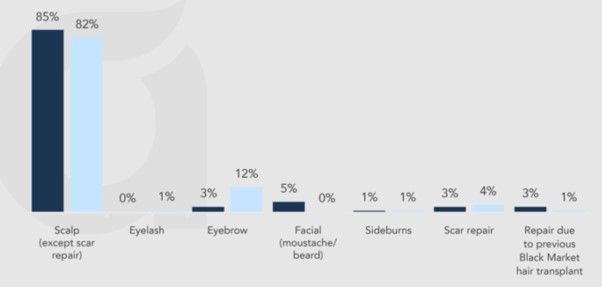
Hair transplant makes up to 5% of all procedures
Improved Appearance, Respect, and Love
Extended Duration Result
Boosts Confidence
Little Scarring
Economical
Still have questions?
How Beard Hair Transplant is Performed
In certain cases, combining these two methods will yield the best outcomes. However, hair that grows naturally is always used in beard transplants, whether FUE, FUT, or both are employed. This remedy is not counterfeit in any way.
All beard transplants commonly use your hair to stimulate new hair growth. All beard transplants, nevertheless, are not created equal. Depending on the patient's needs, surgeons nowadays usually employ one of two primary approaches:
Follicular Unit Extraction in Beard Transplant
There are a few easy stages involved in Follicular Unit Extraction (FUE), which is the most popular type of beard transplant surgery:
- The donor and recipient areas are trimmed to facilitate hair removal and insertion.
- At the site of the transplant, tiny holes are bored into the patient’s face.
- When hairs are extracted from the scalp while the follicle remains intact, they are called follicular units.
- In the perforations on the face, the follicular units are inserted.
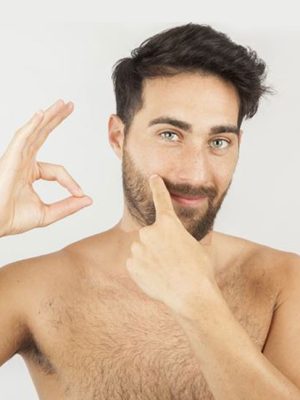
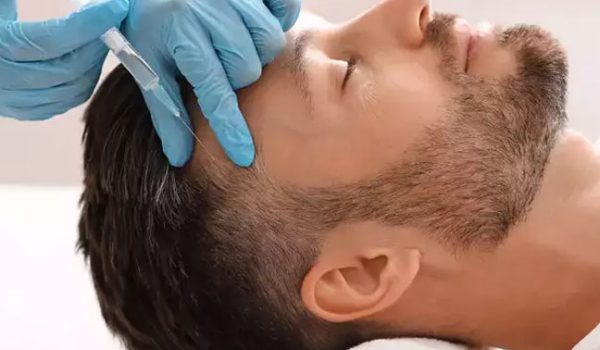
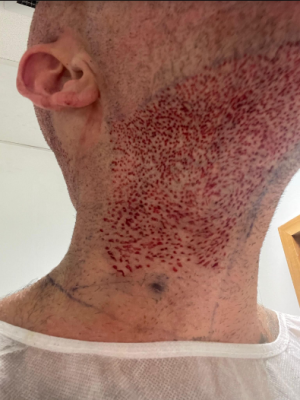
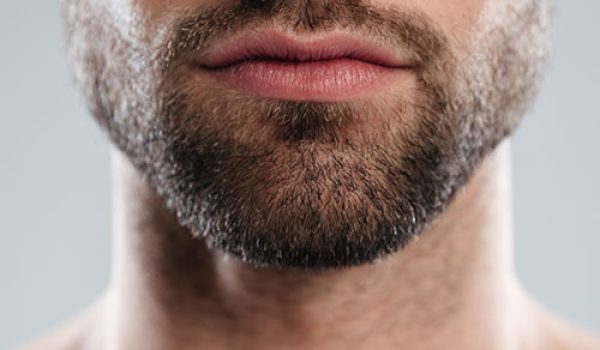

Follicular Unit Transplantation in Beard Transplant
Follicular Unit Transplantation (FUT) is the second most prevalent procedure for beard transplants after strip harvesting and dissection. Though still rather straightforward, this procedure is a little more intricate than FUE:
The donor and recipient’s hair is shaved, and the face is first punctured with holes, just like in FUE.- A “strip harvesting” procedure involves cutting a tiny section of tissue coated in hair from the scalp and moving it to another body area while keeping the hair follicles there.
- After strip harvesting, the wound is closed.
- The tissue strip is cut into smaller pieces under a microscope once extracted.
- Face grafts involve tissue sections containing one to four hair follicles.
Is Beard Procedure Painful?
You may be concerned about the pain or discomfort if you're considering getting a facial hair transplant. Many individuals cringe at the mention of surgery. You can, however, calm down if you're nervous about an uncomfortable process. Because the procedure is carried out under local anesthesia, a beard transplant doesn't typically cause much discomfort. Following the transplant, a few patients may have mild irritation or inflammation, and noticeable redness may persist for a few days. Nevertheless, you need not worry about your hair transplant operation because none of these issues are severe or long-lasting.
Who is a Suitable Candidate for Beard Transplant?
Are you a good candidate for a beard transplant? Relax. Those that are suitable candidates for beard hair transplant treatment are:
Guys are worried about having a patchy beard or cannot grow a beard organically.
Those who have previously undergone electrolysis or laser hair removal.
Those having gender confirmation surgery (female tissue transplantation) were conducted for this reason.
Factors to Consider Before Beard Transplant
Some factors play a role when a candidate undergoes a hair transplant.
They are as follows.
Manage Expectations
Healing Time
Suitability
Cost of Beard Transplant
Risks involved in Beard Transplant
Long-term Care
What is The Cost of Beard Transplant?
Sometimes, you want something so bad but are worried about its cost. When it comes to beard transplants, how heavy should your wallet be? Here is the answer. The average cost of a beard transplant varies with location and a few important variables. For instance:
USA cost – $15,000-$20,000
UK cost – £3,500-£9,500
Turkey cost – $2,500-$4,500
Although it’s always tempting to cut costs, the most crucial thing is that you have faith and comfort in the hair transplant doctor you choose. Make the time to do extensive research before making an appointment somewhere; don’t just concentrate on the cost. Your health and facial hair are both valuable.
Factors Affecting the Beard Transplant Cost
Several factors affect the cost of beard transplants. They are as follows.
The location of the Procedure
Your Surgeon’s Experience and Credentials
Whether You Require Follow Up Services After Beard Transplant
The Size of the Transplant Area and the Number of Grafts Required
How Your Surgeon Carry’s Out the Procedure
Whether the Insurance Covers the Cost
How to Settle for the Best Price for Beard Transplant
It can be difficult to compare prices for a beard transplant. Conduct research and evaluate costs before deciding because the cost of the operation varies significantly among providers. Here are some pointers to help you compare prices before getting a beard transplant.
Do Thorough Research on Different Providers
Look Out for Discounts
Compare Prices
Enquire About the Payment Plan
Consider Your Insurance Cover
What Our Clients Say
In Conclusion
A beard transplant is a great option for those looking to restore their facial hair. The cost of a beard transplant can vary depending on the size of the area being treated, the number of grafts needed, and the surgeon's experience. Generally, a beard transplant costs from £3,000 to £7,000. Researching the cost of a beard transplant and finding a qualified surgeon is important to ensure the best results.
TREATS
Sparse/patchy, non-existent beard growth.

ANAESTHESIA
Local anaesthetic

DURATION
3-9 hours

HOSPITAL STAY
No

RECOVERY
7-14 days


